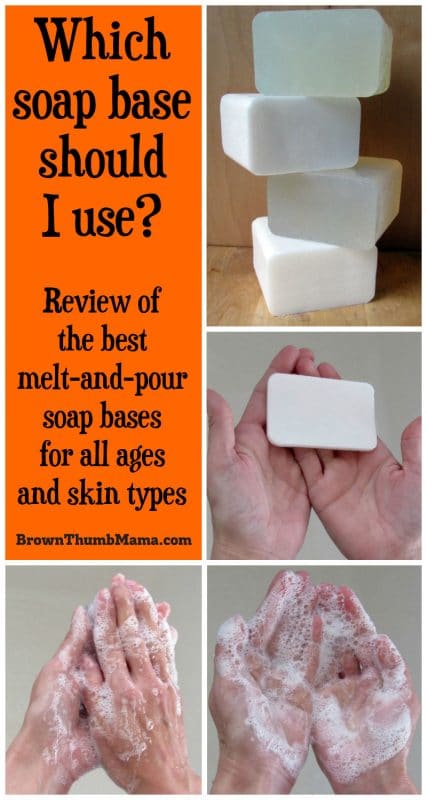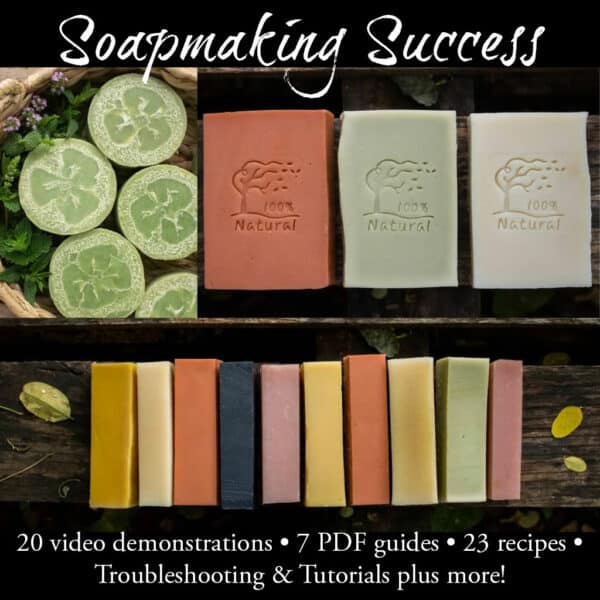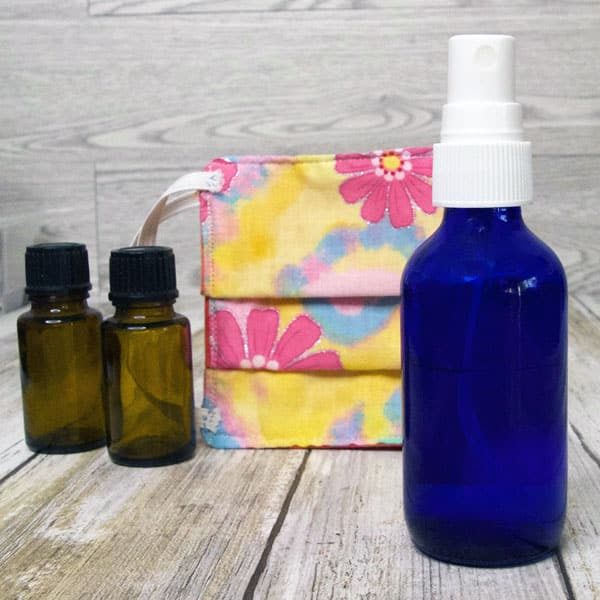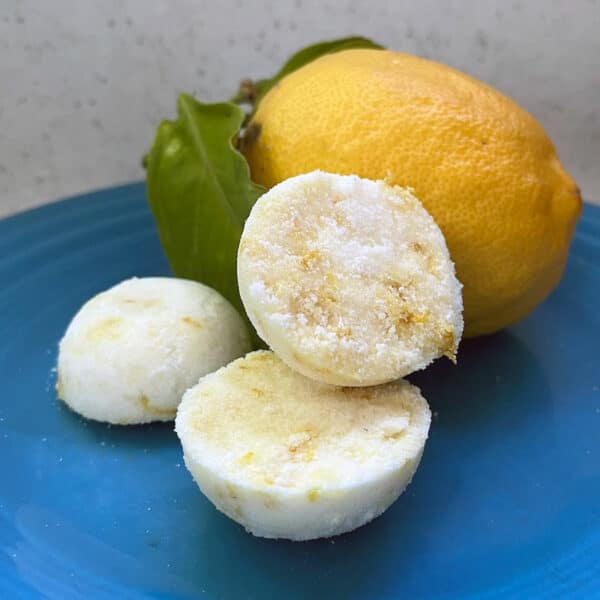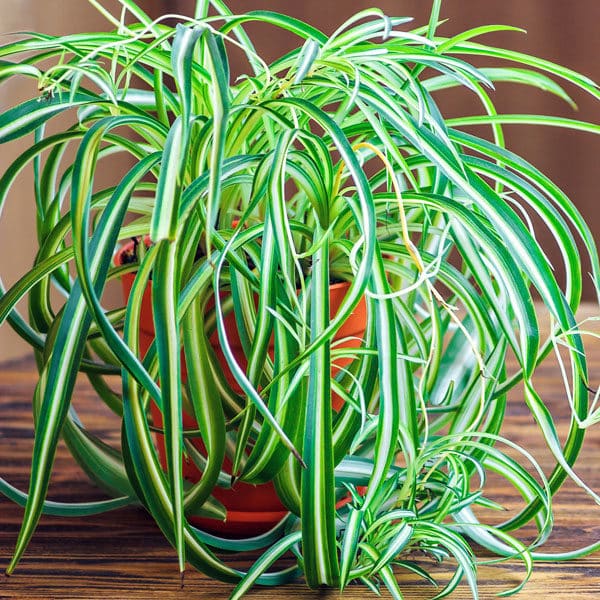This post may include affiliate links.
If you make a purchase, I'll earn a small fee at no extra cost to you.
How do you know which melt-and-pour soap base to use? Which one should you pick for your soapmaking project? Here are reviews of the 6 most popular melt and pour soap bases.

Making soap using the melt-and-pour method is the easiest way to make homemade soap. It’s especially fun and easy with kids, because you aren’t using caustic lye–that part of the soapmaking process has already been done for you.
But how do you know which melt-and-pour soap base to use? A quick Amazon search will give you more than 100 different ones to choose from. Which one should you pick for your soapmaking project?
I’ve done all the hard work of comparing soap bases for you!
Here are reviews of the 6 most popular melt and pour soap bases, what type of skin they are best for, ratings of their bubble-making ability (very important to the 6-year-old), and the different qualities that make some soaps better than others.
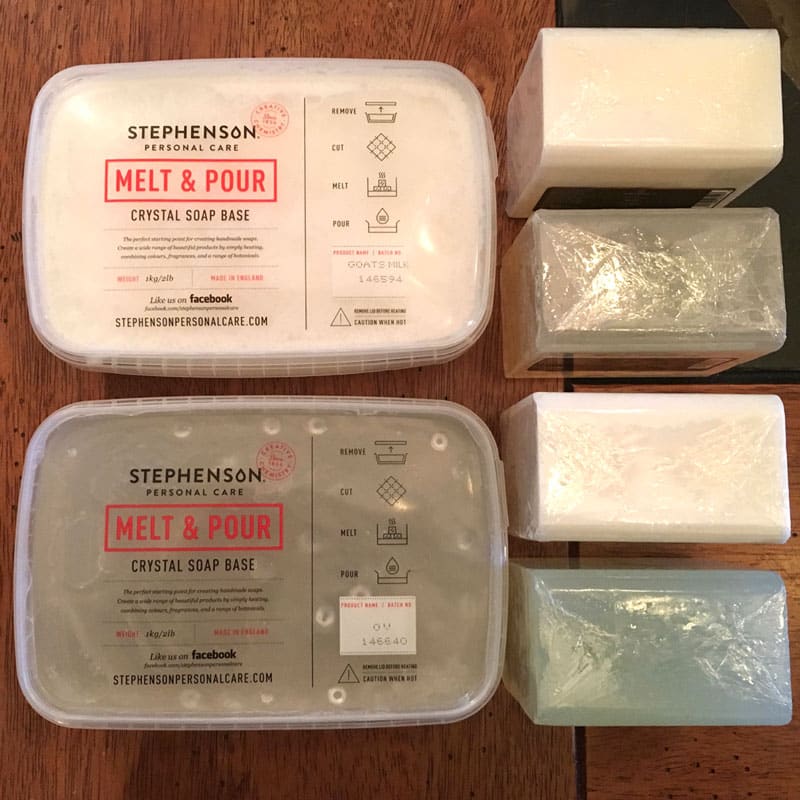
Once you’ve decided which base is right for you, here are easy instructions on how to work with your soap base and customize it with herbs and oils.
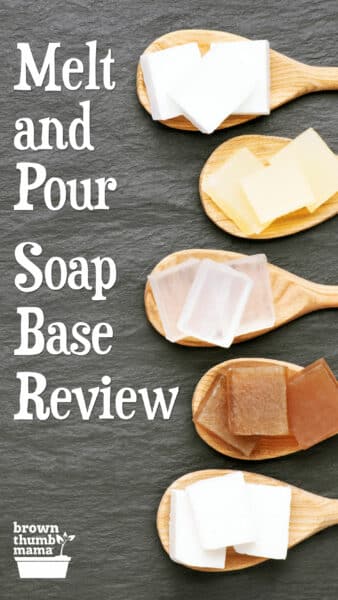
Here’s how to choose the best melt-and-pour soap base for your soapmaking needs.
Glycerin Melt and Pour Soap Base
The name “glycerin soap” is a bit misleading, because glycerin is present in all soaps. This soap base has additional glycerin added and is processed in a special way so it is translucent.
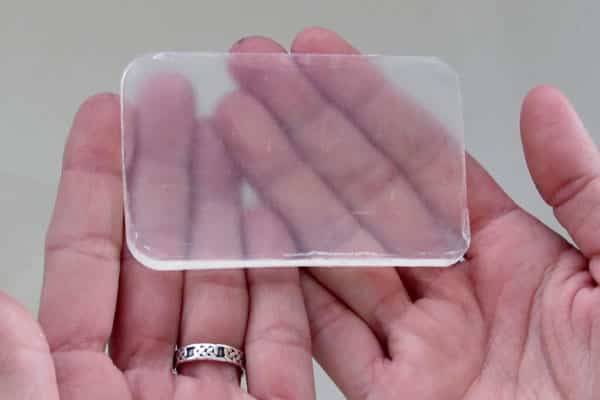
Features: Glycerin is a humectant, which means it is moisturizing.
Best for: normal to dry skin
Bubble rating: 3 out of 5 for good bubbles.
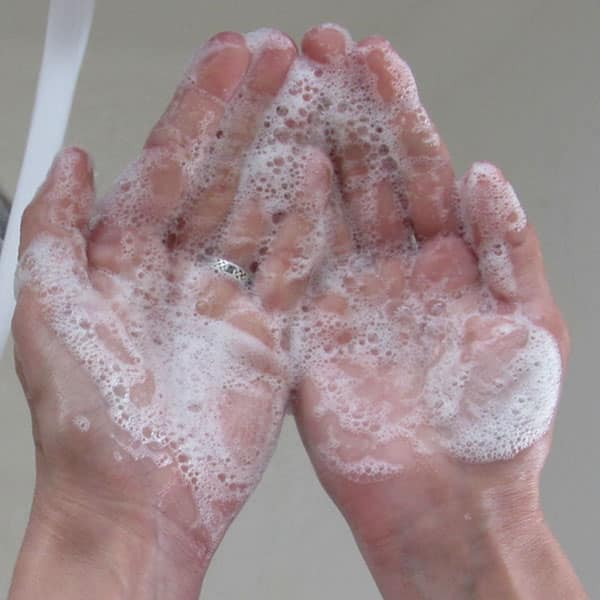
Shea Butter Melt and Pour Soap Base
Shea butter is made from the nut of the karite tree, which is found in central Africa. It’s used in many natural hair and skin products, including this melt-and-pour soap base, because it helps moisturize and strengthen hair and skin.
Features: Shea butter is moisturizing and nourishing.
Best for: those with dry skin or [cough] mature skin, like me.
Bubble rating: 5 out of 5 for excellent bubbles.
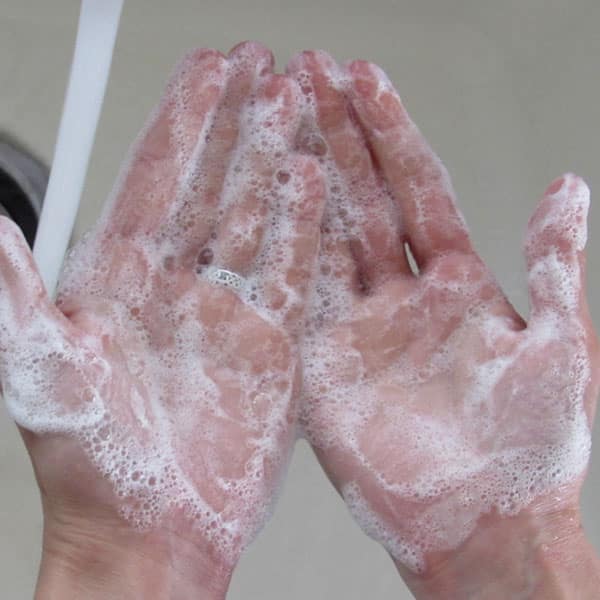
Aloe Vera Melt and Pour Soap Base
This soap base is made in the same way as the glycerin soap base above, and it has aloe vera added. This makes the soap soothing, with a silky texture.
Features: Aloe vera soap is both soothing and healing.
Best for: those with acne.
Bubble rating: 3 out of 5 for good bubbles.
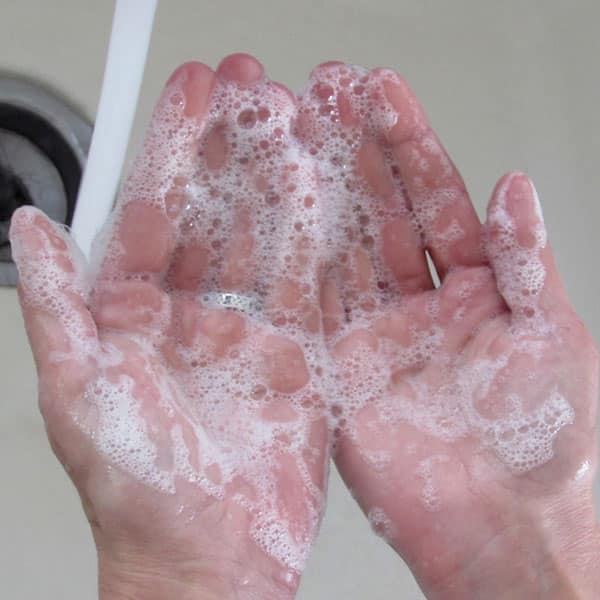
Cocoa Butter Melt and Pour Soap Base
Cocoa butter is the fat from the seeds of the cacao bean–yes, the same plant that gives us chocolate. Cocoa butter melt-and-pour soap base does smell faintly of chocolate, which makes it a great way to start your morning.
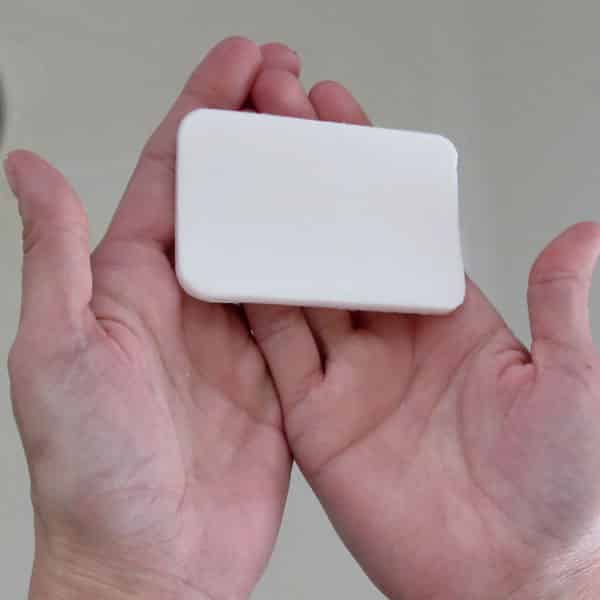
Features: besides smelling divine, cocoa butter is rich and moisturizing for the skin.
Best for: Cocoa butter is recommended to help reduce stretch marks. This would be a great soap to make for an expecting mama!
Bubble rating: 4 out of 5 for very good bubbles.
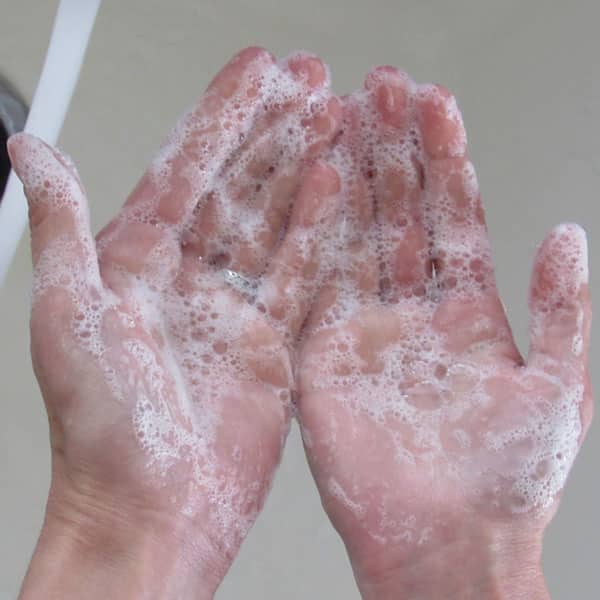
Goat Milk Melt and Pour Soap Base
My first question was, “Why goat milk? Why not cow milk?” It turns out that goat milk is naturally homogenized (the cream doesn’t float to the top, but is evenly distributed throughout the milk). This makes goat milk soap base both rich and moisturizing.
Features: goat milk is nourishing for the skin, and contains vitamins and minerals that help keep skin healthy.
Best for: everyone, but especially helpful for sensitive skin, eczema, roseacea, or problem skin.
Bubble rating: 5 out of 5 for excellent bubbles.
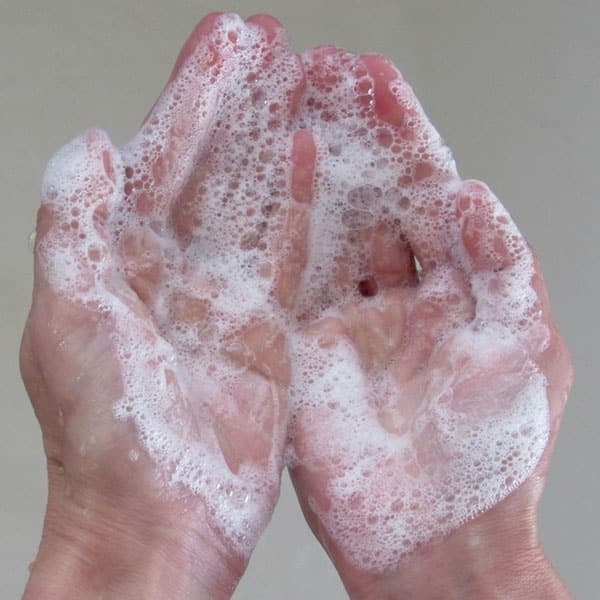
Olive Oil Melt and Pour Soap Base
Remember when doing a “hot oil treatment” on your hair was a big thing? Olive oil is used for hair and skin products, including melt-and-pour soaps, because it’s extremely mild and nourishing.
Features: extremely mild
Best for: the whole family (babies to grandparents).
Bubble rating: 4 out of 5 for very good bubbles.
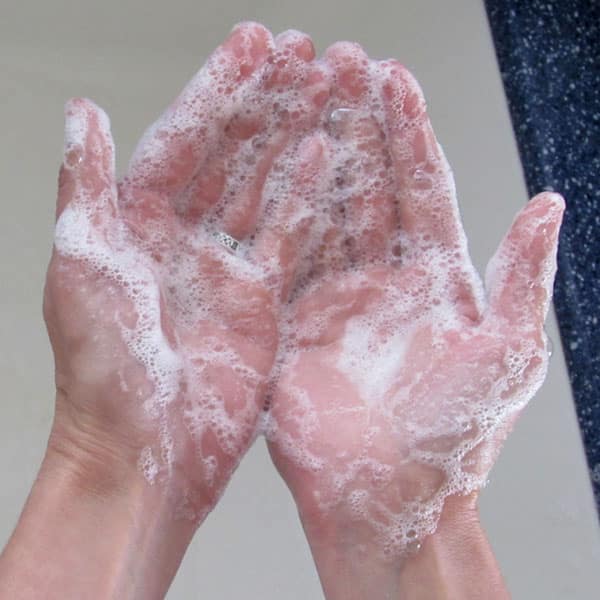
Are you ready to take the next step in soapmaking?
I highly recommend the Soapmaking Success Course by The Nerdy Farm Wife. It contains everything you need to know about making your own natural soaps with ingredients you trust.
There are lots of videos, calculators, recipes, and step-by-step instructions. You’ll love it! Click the photo to learn more.
If you’d rather just buy outstanding natural soaps, visit my friends at Chagrin Valley Soap & Salve. This link will save you $15 off your first order!
Read more about Homemade Soap
